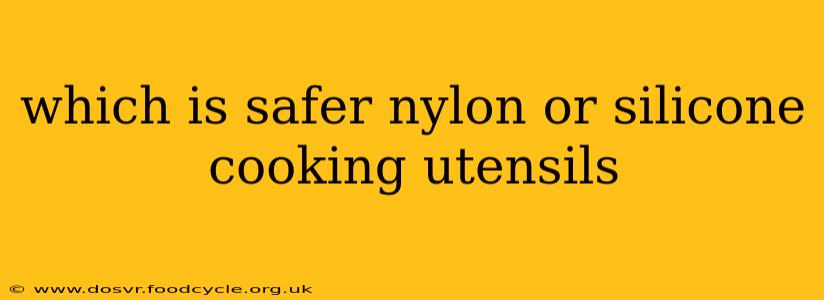Nylon vs. Silicone Cooking Utensils: Which is Safer?
Choosing the right cooking utensils is crucial for both the safety and longevity of your cookware. Nylon and silicone are popular choices, each boasting its own set of advantages and disadvantages. But when it comes to safety, which one reigns supreme? Let's delve into a detailed comparison to help you make an informed decision.
Understanding the Materials:
-
Nylon: Nylon is a thermoplastic polymer known for its durability and heat resistance. Many nylon utensils can withstand temperatures up to 400°F (204°C). However, prolonged exposure to high heat can cause nylon to degrade, potentially releasing harmful chemicals.
-
Silicone: Silicone is a synthetic rubber polymer that boasts exceptional heat resistance, often withstanding temperatures up to 500°F (260°C) or even higher depending on the specific product. It’s also non-reactive, meaning it won't leach chemicals into food. Furthermore, silicone is generally considered more flexible and durable than nylon.
Safety Considerations:
The safety of both nylon and silicone cooking utensils largely depends on their quality and how they're used. Here's a breakdown:
Is nylon safe?
The safety of nylon cooking utensils is a topic frequently debated. While generally considered safe for use at temperatures below their stated maximum, concerns arise from the potential for degradation and leaching of chemicals at higher temperatures or with prolonged exposure to heat.
High Heat Degradation: When exposed to excessively high heat for extended periods, nylon can begin to break down, potentially releasing chemicals. This isn't necessarily always toxic, but it can impart an unpleasant taste or odor to your food.
BPA-Free Concerns: Although many nylon utensils are marketed as BPA-free, this doesn’t eliminate all potential chemical concerns. Nylon production can involve various additives and chemicals, and some consumers have concerns about the long-term effects of potential leaching, even at safe temperatures. Look for reputable brands and utensils that clearly state their compliance with food safety standards.
Is silicone safe?
Silicone cooking utensils are generally considered much safer than nylon, especially regarding heat exposure. Their high heat tolerance means there's less risk of degradation and chemical leaching.
FDA Approval: Many silicone cooking utensils are FDA-approved for food contact, indicating they've met specific safety standards.
Non-Reactive Nature: Silicone's inert nature means it won't react with food or absorb odors or flavors.
Durability: Silicone is also extremely durable and resistant to warping or melting, which enhances its longevity and overall safety as there's no degradation risk of cracked or broken utensils leaching into food.
What about the melting point?
Both nylon and silicone have melting points, but they are far beyond the temperatures achievable in typical home cooking situations. The concern isn't necessarily melting, but degradation and potential chemical release at lower temperatures than the actual melting point. Silicone's higher heat tolerance makes it the safer option in this regard.
Which material is better for nonstick cookware?
Both nylon and silicone are suitable for nonstick cookware, however, silicone is generally preferred due to its superior flexibility and gentler nature on delicate surfaces. Nylon can be slightly more abrasive, although there are many nylon utensils designed for use with nonstick surfaces. Always check the manufacturer’s instructions.
What are the best practices for using cooking utensils?
Regardless of whether you choose nylon or silicone, following these best practices will enhance the safety and longevity of your utensils:
- Avoid overheating: Don't leave utensils in hot pans or on hot stovetops for extended periods.
- Choose reputable brands: Opt for well-known brands with a strong reputation for quality and safety.
- Check for damage: Replace damaged or worn-out utensils immediately.
- Follow manufacturer's instructions: Pay attention to any usage recommendations or temperature limitations provided by the manufacturer.
Conclusion:
While both nylon and silicone cooking utensils have their place in the kitchen, silicone generally emerges as the safer option. Its higher heat tolerance, non-reactive nature, and FDA approval make it a more reliable and safer choice for everyday cooking. However, always choose high-quality products from reputable brands, and follow best practices for safe usage to ensure the utmost safety for you and your family.
